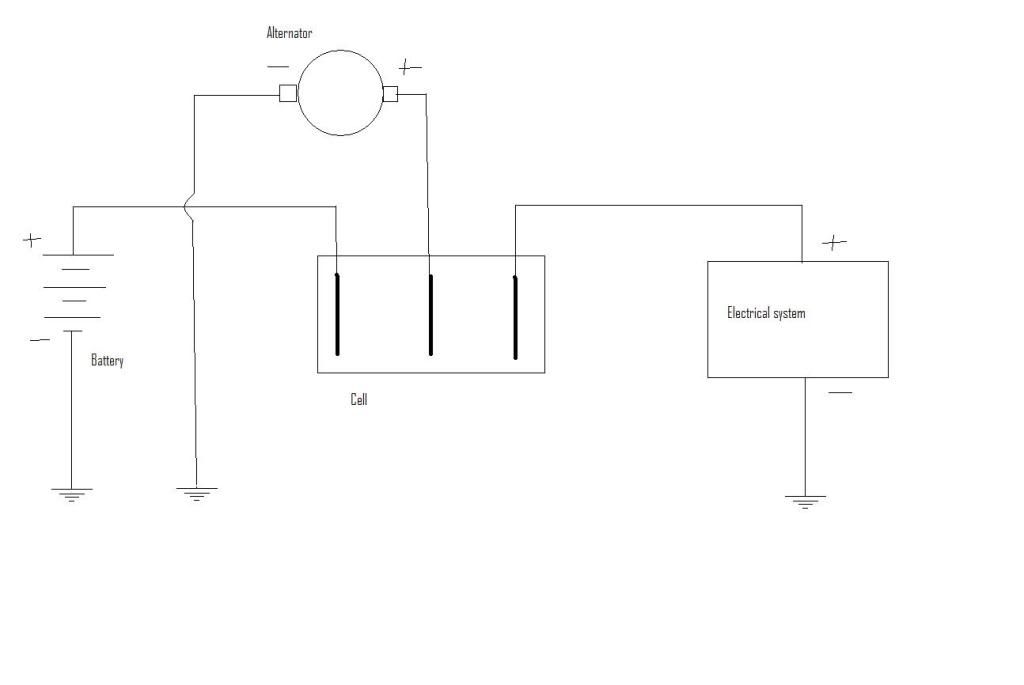First stages of building have commenced. We have to heat the shop.
Cold fingers and frozen metal are a dangerous mix. Makes a person want to eat ice cream.
So we are converting a chest freezer into a heater for the shop.
Big John (I refer to him as "John, Notorious B. I. G. " when his boss calls looking for him) is going to get a crash course in refrigeration, and I get some help with the heavy lifting. I run the saw and power tools, he picks up the disaster.
When we are done, we should have heat in the shop, and be ready to start building.
AlaskaStar
Statistics: Posted by AlaskaStar — Fri Nov 21, 2008 6:51 am
]]>
If you have little to no torque demand, then the power source wont be pushed too hard.
If you have the ABILITY to stop the vehicle in the fashion of the "red-to-red-tire-smoking-pink-slipping-street-rod-drag-racing"
AND be ABLE to regeneratively brake at the same time, then wouldn't that make sense?
Not only that, but you don't have to mash that brake pedal every time you stop. The regenerative brakes work much like the exciting of the rotor on an alternator: If you barely put any current into the rotor, the output will be very small on the stator, and the horsepower will be minimal to turn it. If you put a ton of current into the rotor, the output of the stator will be very high and result in the large requirement to make it rotate.
This very ability to change the duty cycle of the regenerative braking force is what allows the 'variable braking force' to be applied and NOT use the brake friction surfaces during the stopping motion/ operation of the vehicle.
The ability to capture more power in a more efficient manner is a great thing to have.
AlaskaStar
Statistics: Posted by AlaskaStar — Mon Nov 10, 2008 2:00 am
]]>
]]>
This could be set up using a one way roller clutch/ sprag (similar to the ones used in automatic transmissions) for the driving/ driven motion. This would allow the driving motion from the motor to push the car, but when being driven the one way roller sprag/ clutch is released on one end and held by the other causing it to go through a geartrain to change the speed and step up a bunch.
Note the differences in the wording:
DRIVING= powered by motor
DRIVEN= pushed by car in regenerative mode
so when using two roller sprags, it can be achieved in a away that is automatic, doesn't use clutches and allows for automatic switching between the functions.
Some food for thought...also because I am rebuilding a Ford AX4S-HO transaxle today... and replacing the clutch in a Ford Bronco II.
AlaskaStar
Statistics: Posted by AlaskaStar — Sat Nov 08, 2008 4:06 am
]]>
BEMF in an electric motor? Sounds like Bendini again to me.
Statistics: Posted by Jehu — Fri Nov 07, 2008 3:08 am
]]>
And what of the BACK EMF (BEMF) inside a motor? Great source of power there!
And any other good sources?
AlaskaStar
Statistics: Posted by AlaskaStar — Fri Nov 07, 2008 2:22 am
]]>
]]>
]]>
]]>
]]>
]]>
]]>

You'll have to excuse me if I can't grasp what you're teaching us atm because I'm blocked up atm and coughing like mad due to a bout of bronchitis.
Otherwise what do you think of my idea in the image before? Do I have the right idea in regards to the principals involved or do I have a bit to go?
Statistics: Posted by Jehu — Mon Nov 03, 2008 6:18 am
]]>
Statistics: Posted by Hydrogenworld — Mon Nov 03, 2008 4:51 am
]]>
It worked like this:
4 plates total. 2 plates were connected to the DC power source, positive and negative. The other 2 plates were connected to the load. The current had to go THROUGH the water to complete the circuit. The larger the load, the more hydrogen was produced.
Then I removed one plate. I put it into a pickup truck, only because the loading and charging components were already in place. The new 3 plate and terminal setup was great. The 2 outer plates were connected as such: left plate: battery Positive. Right Plate, truck electrical.
CENTER PLATE connection was to the alternator. All 3 plates were POSITIVE CONNECTIONS. There was NO NEGATIVE CONNECTION. what occurred was as such: Power was required to start the engine. The high current draw went through the cell to supply the starter motor. The engine starts and the current from the alternator now heads to the electrical system and the battery at the same time. The battery, once fully charged will stop accepting a charge and the vehicle electrical system is not powered fully on the alternator making the alternator the positive connection and the truck electrical the negative connection respectively.
Differential Potential. The plates were made from ALUMINUM, the water was mixed with METHANOL and SOAP (to prevent freeze-up, and break the surface tension) which was the electrolyte.
Now are there any other ways to carry this out?
Think abstract here. You can introduce energy to the cell in more ways than one....
I am trying to prod people into thinking here, experimenting and such. I have some nifty answers and good solutions here, as well as various methods of carrying out the aforementioned tasks in this thread. I want more than just me to figure this out. Look at it differently. That is all I ask.
AlaskaStar
Statistics: Posted by AlaskaStar — Mon Nov 03, 2008 4:40 am
]]>